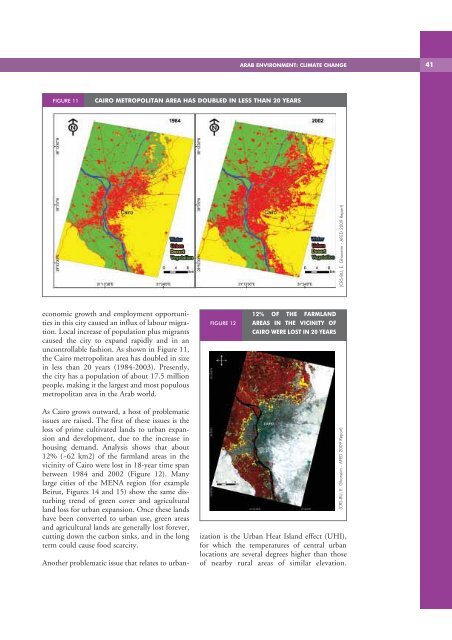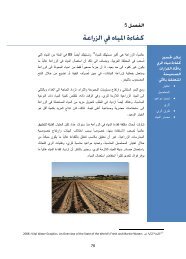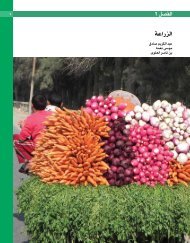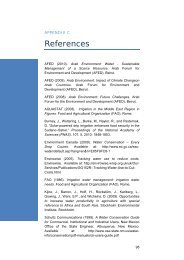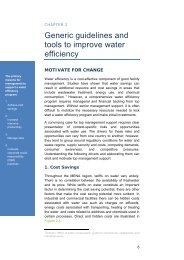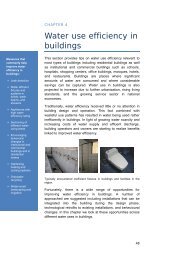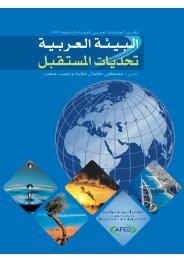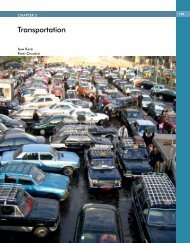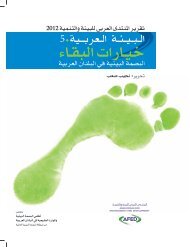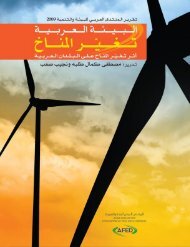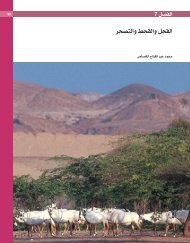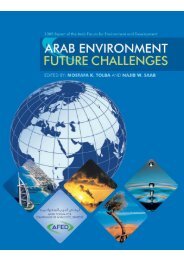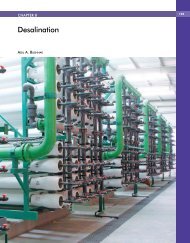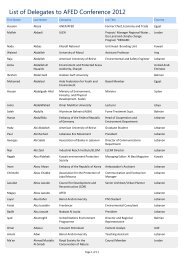Impact of Climate Change on Arab Countries - (IPCC) - Working ...
Impact of Climate Change on Arab Countries - (IPCC) - Working ...
Impact of Climate Change on Arab Countries - (IPCC) - Working ...
Create successful ePaper yourself
Turn your PDF publications into a flip-book with our unique Google optimized e-Paper software.
ARAB ENVIRONMENT: CLIMATE CHANGE 41<br />
FIGURE 11<br />
CAIRO METROPOLITAN AREA HAS DOUBLED IN LESS THAN 20 YEARS<br />
(CRS-BU, E. Gh<strong>on</strong>eim - AFED 2009 Report)<br />
ec<strong>on</strong>omic growth and employment opportunities<br />
in this city caused an influx <str<strong>on</strong>g>of</str<strong>on</strong>g> labour migrati<strong>on</strong>.<br />
Local increase <str<strong>on</strong>g>of</str<strong>on</strong>g> populati<strong>on</strong> plus migrants<br />
caused the city to expand rapidly and in an<br />
unc<strong>on</strong>trollable fashi<strong>on</strong>. As shown in Figure 11,<br />
the Cairo metropolitan area has doubled in size<br />
in less than 20 years (1984-2003). Presently,<br />
the city has a populati<strong>on</strong> <str<strong>on</strong>g>of</str<strong>on</strong>g> about 17.5 milli<strong>on</strong><br />
people, making it the largest and most populous<br />
metropolitan area in the <strong>Arab</strong> world.<br />
FIGURE 12<br />
12% OF THE FARMLAND<br />
AREAS IN THE VICINITY OF<br />
CAIRO WERE LOST IN 20 YEARS<br />
As Cairo grows outward, a host <str<strong>on</strong>g>of</str<strong>on</strong>g> problematic<br />
issues are raised. The first <str<strong>on</strong>g>of</str<strong>on</strong>g> these issues is the<br />
loss <str<strong>on</strong>g>of</str<strong>on</strong>g> prime cultivated lands to urban expansi<strong>on</strong><br />
and development, due to the increase in<br />
housing demand. Analysis shows that about<br />
12% (~62 km2) <str<strong>on</strong>g>of</str<strong>on</strong>g> the farmland areas in the<br />
vicinity <str<strong>on</strong>g>of</str<strong>on</strong>g> Cairo were lost in 18-year time span<br />
between 1984 and 2002 (Figure 12). Many<br />
large cities <str<strong>on</strong>g>of</str<strong>on</strong>g> the MENA regi<strong>on</strong> (for example<br />
Beirut, Figures 14 and 15) show the same disturbing<br />
trend <str<strong>on</strong>g>of</str<strong>on</strong>g> green cover and agricultural<br />
land loss for urban expansi<strong>on</strong>. Once these lands<br />
have been c<strong>on</strong>verted to urban use, green areas<br />
and agricultural lands are generally lost forever,<br />
cutting down the carb<strong>on</strong> sinks, and in the l<strong>on</strong>g<br />
term could cause food scarcity.<br />
Another problematic issue that relates to urbanizati<strong>on</strong><br />
is the Urban Heat Island effect (UHI),<br />
for which the temperatures <str<strong>on</strong>g>of</str<strong>on</strong>g> central urban<br />
locati<strong>on</strong>s are several degrees higher than those<br />
<str<strong>on</strong>g>of</str<strong>on</strong>g> nearby rural areas <str<strong>on</strong>g>of</str<strong>on</strong>g> similar elevati<strong>on</strong>.<br />
(CRS-BU, E. Gh<strong>on</strong>eim - AFED 2009 Report)


